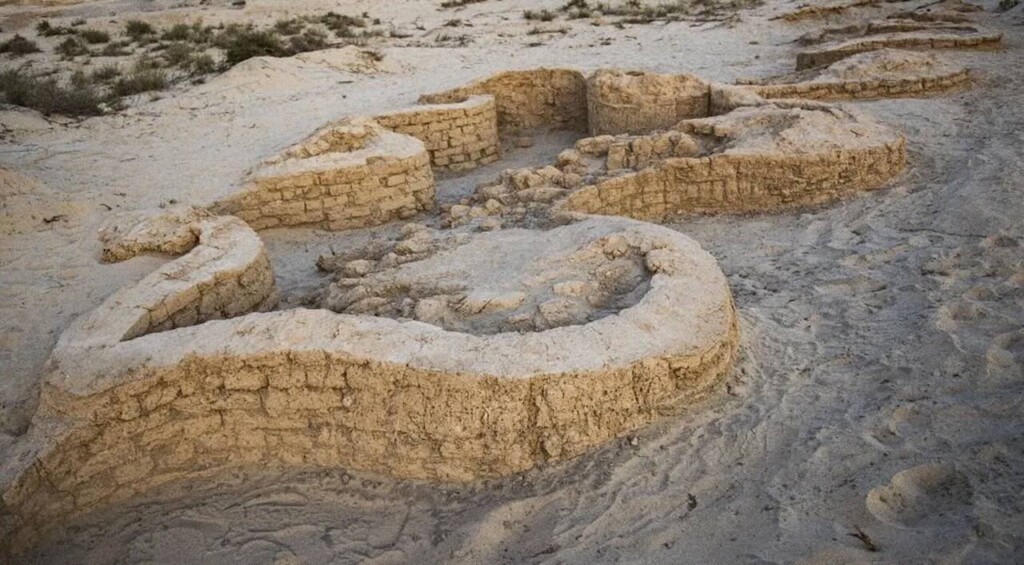Fortress Unearthed In Egypt Features Thick, Curving Walls Built 3,500 Years Ago

Rather than keeping out invaders, it’s believed the curves in these ancient fortress walls helped prevent them being eroded away by sand.
And look at what a good job they did: still intact after 3,500 years in the Sinai weather.
Discovered during recent excavations at the Tell el-Kharouba archaeological site in the northern Sinai Desert, it’s believed to have been commissioned during the reign of Thutmose I.
Thutmose, along with other New Kingdom pharaohs, ordered the construction of multiple frontier border posts like this one to prevent invaders coming from the Near East.
While pottery, the remains of a storeroom, living area, and a room used as a bakery were all located in the ruins, the real standout find were without a doubt the exceptionally preserved 8-feet-thick walls which run 350 feet and incorporate 11 defensive towers.
“Taking into account storerooms, courtyards and other facilities, we estimate that the garrison likely ranged between 400 and 700 soldiers, with a reasonable average of around 500 soldiers,” excavation leader Hesham Hussein, the undersecretary for Lower Egypt and Sinai archaeology tells Live Science.
The walls also divided these living areas with the rest of the fort, and it’s hypothesized that the entire complex was a sort of cookie-cutter design that was replicated as part of a defense strategy to control this important highway between the land of Canaan and Egypt, as well as a large section of eastern Mediterranean coast.
LATEST FINDS FROM EGYPT:
- Ancient Tombs More Than 3,000 Years Old Unearthed in Egypt’s Luxor
- Archaeologists Discover First Pharaoh’s Tomb in Egypt in More Than a Century
- Cleaning a Millennium of Sand and Soot Egyptologists Reveal Ancient Creation Myth in Exquisite Artwork
Petrified bread dough was discovered by the archeologists, as were a clay stamp bearing the name of the pharaoh, and volcanic rocks—unlikely to have originated in Egypt—and which are believed to come from Greek traders.
“[E]very fortress we discover adds a new brick to our understanding of the military and defensive organization of pharaoh Egypt, and confirms that Egyptian civilization was not limited to temples and tombs, but was a state of powerful institutions capable of protecting its land and borders,” stated Dr. Mohamed Ismail Khaled, Secretary-General of the Supreme Council for Archaeology.
For now, much of the fortress remains buried beneath sand dunes. The archaeologists are planning to continue excavations soon in the hopes that the full extent of the walls can be revealed.






Please be good and do not spam. Thank you.